Tanks of England during the Second World War
Since the beginning of the war, none of these tanks have shown themselves; all of them were inferior in their class to German Pz.II, Pz.III and Pz.IV. During the war, English tank builders had to develop and launch into production a new generation of tanks that took part in the European theater of operations in North Africa. A significant number of them were supplied under Lend-Lease to the Soviet Union.
Light tank Mk.III Valentine
The most successful lightweight and most massive English tank of the Second World War was developed in 1938 year and launched into mass production in 1940, 8275 tanks of various modifications were produced in total.
The layout of the classic tank with the placement of the engine compartment in the rear of the tank. The crew of the tank three people, the driver was housed in the hull, the commander and the gunner in the tower. On some modifications of the tank crew was a man 4, in the three-seater turret housed the commander, gunner and loader. In order to reduce the weight of the hull and tower of the tank were significantly clamped in size, which significantly worsened the habitability of crew members.
By design, the hull and the tower were riveted, but they were assembled not on a frame, but by fastening parts to each other with bolts and rivets, which required high precision in the manufacture of parts. The hull and turret were assembled from rolled armor plates, on separate modifications the hull and turret foreheads were cast, on the last modifications the tank construction was completely welded. With a weight of 15,75 tons for a light tank, he had satisfactory armor, armor thickness of the hull and sides of the 30-60 mm, tower 65 mm, bottom 20 mm, roof 10 mm. The tower had a cylindrical shape and was mounted on a box for a tower.
For the driver's landing, there were two hatchways in the upper side plates on the sides of his workplace; besides, he had a viewing hatch in the middle of the upper frontal armor plate for observation. round on a rotating chase. The seats of all crew members were equipped with periscope viewing devices.
The armament of the tank consisted of an 40-mm long-barreled QF2 L / 52 cannon and a 7,92-mm machine gun. On the latest modifications of the tank was installed 57-mm gun QF6 or 75-mm gun OQF 75mm.
A diesel engine with a power of 135 hp, providing 25 km / h speed and 150 km cruising range, was used as the power plant.
The chassis on each side consisted of six rubber-supported road wheels, two large-diameter and four small, and three rubber-supported rollers. Three road wheels were interlocked in two trucks, a large roller each truck is located on the primary balancer, mounted on a bracket on the tank hull. A secondary hinge is attached to the primary balancer, with a rocker with two small rollers placed on it. Each bogie was suspended with a spring spring with a telescopic hydraulic shock absorber.
The tank was widely used on many fronts in Europe and North Africa, including the Red Army. Under the Lend-Lease, 3782 Mk.III Valentine tanks of various modifications were supplied to the USSR until the end of the war.
In general, the tank received a positive assessment of tankers, while the reliability of the power plant based on a diesel engine, low visibility on the battlefield, good mobility was noted. Among the shortcomings, weak armaments with the 40-mm cannon were noted, the absence of high-explosive fragmentation projectiles to the cannon and low reliability of the undercarriage, when at least one track roller failed, the tank could not move.
Medium infantry tank Mk II Matilda II
Medium tank Mk II Matilda II was designed to support infantry, developed in 1938 year and began to enter the army in 1939 year before the war, took part in the first battles with the Germans in France. In total, the 1943 year was released 2987 tanks Matilda II of various modifications, it was the only English tank that went through the entire war.
The layout of the tank is classic, with a crew of 4 man. The hull was assembled mainly from rolled armor plates and partially cast armor parts (bow, turret box and stern), which were connected to each other by guds. The tower was cylindrical in shape with small angles of inclination; it was made of one curved armor sheet; in later specimens it was cast. On the roof of the tower was placed commander's turret with a double-wing hatch.
The tank was distinguished by a powerful reservation at the level of Soviet heavy KV tanks and from English tankers it was nicknamed “thick-skinned lady”. At the beginning of the war, he could not hit a single German tank. Armor weight of the tank 26,95 tons provided protection at the level of a heavy tank, thickness of the hull armor forehead top / middle / bottom 75 / 47 / 78 mm, top sides 70 mm, bottom sides 40 mm 20 mm, the bottom and roof 75 mm .
The armament of the tank consisted of an 40-mm QF2 L / 52 cannon and a paired 7,7-mm machine gun, a significant drawback of the gun was the absence of a high-explosive fragmentation projectile. Subsequently, the 76,2 inch Howitzer Mk.I 3-mm howitzer with a high-explosive fragmentation projectile was installed on the CS modification.
Two Leyland diesel engines with a power of each 87 (95) hp, providing speed on the 24 km / h highway and a cruising range of 257 km, were used as the power plant.
The chassis on each side included ten support rollers assembled in pairs in five carriages, five supporting rollers. Each of the carriages had a balanced block type “scissors” suspension with horizontal spring springs. Virtually the entire undercarriage was protected by side armored screens.
Tank Mk II Matilda II was distinguished by high reliability and very powerful for its time booking, which increases the survival of the tank and crew on the battlefield. The German 37-mm anti-tank gun was powerless against his armor. At the initial stage of the war, until the Germans appeared more powerful anti-tank guns, this tank remained an invulnerable enemy.
.
Under the Lend-Lease, the Mk II Matilda II tank was delivered to the Soviet Union; in total, 918 tanks were supplied. The first deliveries were made at the end of 1941, in frosty weather. Tanks were not adapted for these conditions, fuels and lubricants froze. and the caterpillars did not provide the necessary traction with the ground in winter conditions. Subsequently, these problems were resolved, and the tank was confidently operated in the Red Army until the middle of 1943.
Heavy infantry tank A22 Churchill
The A22 Churchill tank was the most defended English tank of the Second World War period, developed in 1940 and produced in 1940-1945, in total 5640 tanks of various modifications were produced. From the tank required high firepower, survivability and maneuverability to support the advancing infantry, the suppression of firing points and the reflection of counterattacks of enemy tanks.
The tank was a classic layout with the crew of a 5 man, the driver and gunner were housed in the hull, and the commander, gunner and loader in the turret. The hull structure was welded from rolled armor plates. The design of the tower was hexagonal in form, on various modifications cast or welded from cast parts. With a weight of 39,57 tonnes, the tank had powerful anti-missile protection. The thickness of the armor of the forehead of the 101 mm hull, the sides of the 76 mm, the forehead of the 88 tower mm, the roof and the bottom of the 19 mm.
On versions Mk.I and Mk.II, the 40-mm gun QF2 L52 was used as the main armament. The ammunition consisted of only armor-piercing shells, high-explosive fragmentation shells were not. On versions Mk.III and Vk.IV was installed 57-mm gun QF6 L43, and on versions Mk.V 57-mm gun QF6 L50. On versions Mk.VI and Mk.VII was installed 75-mm OQF 75mm L36,5, which had armor-piercing ammunition and high-explosive shells in the ammunition load. As an additional weapon, two 7,92-mm BESA machine guns were used, one paired with a cannon, the other coursework in the tank body, and an anti-aircraft 7,7-mm machine gun.
The Twin-Six engine with a power of 350 hp, providing 27 km / h speed and 144 km cruising range, was used as a power plant.
The undercarriage on each side contained 11 small-diameter track rollers with an individual balancing suspension on cylindrical spring springs. The upper part of the chassis closed armored screen.
The tank A22 Churchill on Lend-Lease with 1942, was supplied to the USSR. Total was delivered 253 tank. The tank was used in battles in the Battle of Stalingrad, on the Kursk Bulge, and in the lifting of the blockade of Leningrad. The Red Army commended its powerful booking and good handling. As drawbacks, the difficulty of operating in winter and poor maneuverability in off-road conditions were noted.
Cruising tank Mk.VI (A15) Crusader
The tank was developed in the 1939-1940 years and went to the troops mainly to replace the same class cruiser tank Mk.V (A13) Covenanter. The tank was produced in 1940-1943's, in total 5300 (5700) tanks were produced.
The tank is a classic layout with a crew of 5 (4) man, weighing 19,3 tons. In the case on the right side there was a place for a driver, over whose head was installed a box cabin with a two-wing upper hatch, three viewing instruments and a Besa machine gun. To the left of the wheelhouse there was a cylindrical turret, also equipped with a Besa machine gun and a top hatch reclining to the starboard.
During the operation of the first samples of the tank in the army, the machine-gun turret was dismantled due to its inexpediency by the forces of the field workshops, and the cutout under it was brewed with an armor plate. In the process of upgrading both machine guns from the hull were removed because of their low efficiency, respectively, the crew was reduced to four people due to the exclusion of the machine gunner in the tank hull. On the roof of the hull a three-seat tower of complex shape was installed, unified with the tower of the A13 tank. At the rear of the tower’s roof was a commander’s hatch that was slid back.
The design of the hull and the tower were riveted from sheets of rolled steel. The armor protection was not high, the thickness of the armor of the 22-34 case, mm, the sides of the 18-20 case, mm, of the 32 tower, mm, 16, and the roof of 14, mm.
The tank’s armament consisted of an 40-mm QF2 L / 52 cannon and a paired 7,92-mm machine gun; on later samples, the 40-mm cannon was replaced with an 57-mm QF6 cannon, the 76,2-mm howitzer was mounted on the CS series tanks.
The Liberty Mk.III engine with a power of 340 hp, providing speed on the 44 km / h and power reserve 255 km, was used as the power plant.
The tank's running gear was based on the Christie suspension, each side had five rubber-coated twin large-diameter rollers with shock absorption on vertical spring springs.
Tank Crusader had good mobility, but weak security. Many of its modifications were widely used at the initial stage of the Second World War as part of the French and British armies. In 1940, most of the tanks of the first and second modifications were dropped from Dunkirk and captured by the Germans. In North Africa, the Crusader tank was the main tank of the British army before the battle of El Alamein, when the incoming M3 “Lee” American tanks began to supplant it.
Cruising tanks Mk.VII (A24) Cavaler, Mk.VIII (A27L) Centaur and Mk.VIII (A27M) Cromvell
At the end of 1940, in England, they began to design the A24 Cavaler, a new cruiser tank developed on the basis of the A15 Crusader cruiser tank components and assemblies as part of the Cromvell program. Without testing, the tank was launched into a series, in 1942-1943, 500 tanks of this type were launched.
The tank was a classic layout, weighing tons of 26,95 and crewed by a 5 man. In the triple tower housed the commander, gunner and loader. To the body of the driver and assistant driver shooter machine gun.
The design of the hull and turret was rectangular in shape without any rational tilt angles and assembled from rolled armor plates and fastened to the frame with the help of bolts. To the left of the driver in the front sheet was set exchange rate gun. The landing of the crew was carried out through two hatches in the roof of the tower and one hatch in the roof of the hull.
The tank had a satisfactory reservation, the thickness of the armor of the 57-64 hull forehead, mm 32 sides, the 76 tower's forehead, mm 14 roof, and the 6,5 bottom.
The armament consisted of an 57-mm QF6 cannon and two 7,92-mm BESA machine guns, one was paired with a cannon, the other was mounted in a case.
The Liberty L12 engine with a power of 400 hp, providing speed on the 39 km / h and power reserve 265 km, was used as the power plant.
The chassis was borrowed from the A15 Crusader tank with a Christie suspension containing five rubber-coated large-diameter skating rinks with an individually reinforced vertical spring suspension on each side.
Tank A24 Cavaler practically did not take part in the hostilities. It was mainly used as training for the training of tank crews and became the base for the A27L Centaur tank.
The Centaur A27L tank was developed as a simplified intermediate version between the A24 Cavaler and the A27M Cromvell with the Meteor engine, which has not yet been completed. A total of 1942 to 1944 year was released 3134 tank A27L Centaur. The first samples of the A27L Centaur practically did not differ from the A24 Cavaler. The Centaur III was equipped with the 75-mm Mk VA L50 cannon, while the modification of the Centaur IV infantry support tank used the 95-mm howitzer for firing high-explosive fragmentation shells.
A27L Centaur tanks also practically did not participate in hostilities, a small party of Centaur IV was involved during the landing in Normandy in 1944, the remaining tanks were upgraded to the level of Cromvell.
The A27M Cromvell tank was one of the most famous tanks of the Second World War. With the new Meteor engine, it began to be released only from the 1943 of the year, the 1945 of these tanks was released on the 1070 of the year. Also, a considerable number of tanks A27L Centaur was upgraded to the level of Cromvell. In total, the army had 4016 tanks of all series of the Cromvell family. In the body of the tank, the exchange gun was removed and the crew was reduced to four people. Reinforced roof booking up to 20 mm, bottoms up to 8 mm, tank weight increased to 27,9 tons. On the Cromvell Vw version, the hull and turret were welded and the frontal hull reservation was increased to 101 mm, and on the Cromvell VI modification, an 95-mm howitzer was installed.
As the power plant on А27M Cromvell was used Rolls-Royce Meteor engine with 600 horsepower, providing speed on the highway 64 km / h and cruising range 278 km.
A27M Cromvell tanks participated in many operations in North Africa and European theaters. In terms of firepower, they were seriously inferior to the German and American tanks of that period.
Cruising tank А30 Challenger
The A30 medium cruiser tank fighter Challenger was developed as a support tank designed to fight German tanks at long distances in addition to the Cromvell tank. The tank was developed on the basis of the elongated chassis of the Cromvell tank with a six-bearing chassis and armed with the most powerful 76,2-mm cannon at that time. In the 1943-1944, only 200 tanks of this type were launched, since with the advent of the American Sherman tank with better performance, the Challenger tanks were no longer necessary.
By design, the Challenger was not much different from the Cromvell. The layout was classic, only a driver was placed in the building, the course machine gun was excluded, in a larger tower there were four people - the commander, gunner and two loaders, the main attention was paid to weapon service.
The hull and the tower were welded. Reservations have been enhanced, the thickness of the armor of the 102 hull forehead, mm 32 sides, 64 mm forehead, 20 mm roof, 8 bottom, and the tank weight reached 33,05 tons.
The armament of the tank consisted of a long-barreled 76,2 QF17 L55 cannon and a coaxial 7,62-mm machine gun.
As a power plant, a Rolls-Royce Meteor 600 horsepower engine was used, providing speed along the 51,5 highway km / h and power reserve 193 km.
The undercarriage of the tank was a modification of the elongated undercarriage of a Cromvell tank with a Christie suspension and six track rollers.
The A30 Challenger tanks were notable for the convenience of crew work in a large turret and high efficiency of defeating enemy armored vehicles. But because of the small number of tanks released, they did not have a serious impact on the fighting.
Cruising tank A34 Comet
The A34 Comet tank was a further development of the Cromvell tank, created on the basis of the units and assemblies of this tank and was the most advanced British tank that took part in the hostilities of the Second World War. The tank was developed in 1943 year, taking into account the experience of using the Cromvell tank in combat, 1944 samples of this tank were released in 1945-1186.
The tank of the classic layout, the crew of the 5 man, the driver and the gunner-gunner were housed in the hull, the commander, gunner and loader in the tower. The hull and turret were welded; the tank had a satisfactory anti-projectile armor with a tank weight of 35,78 tons. The thickness of the armor of the forehead of the hull 76 mm, the sides of the 43 mm, the forehead of the tower 102 mm, the roof 25 mm, the bottom 14 mm.
The armament of the tank consisted of 76,2-mm gun QF77 L55 and two 7,92-mm BESA machine guns, one mounted in the turret, the second heading in the body.
As a power plant, a Rolls-Royce Meteor 600 hp engine was used, providing 47 km / h speed and 200 km cruising range.
Chassis with Christie suspension with five rubberized rollers of reduced diameter and four supporting rollers. Individual suspension on cylindrical spring springs with hydraulic shock absorbers.
In general, A34 Comet was rated as the best English tank of the war period and one of the best tanks used by the warring sides in World War II for firepower, excellent visibility, security and mobility.
Heavy cruising tank A41 Centurion
The A41 Centurion tank was developed in 1944 year as a vehicle combining the qualities of cruising and infantry tanks with significantly enhanced and improved weapons and protection. One of the tasks was to provide comfortable working conditions for the crew, and therefore, due to the spacious layout, the tank's weight reached 42 tons and its mobility was limited. The tank did not take part in hostilities.
The tank was a classic layout with a crew of four people. Created using advanced components and assemblies tanks Cromvell and Comet. The hull and the tower were welded from rolled armor plates, on individual modifications the tower was cast.
The tank’s armament consisted of an 76,2-mm QF17 L55 cannon and installed in a ball joint to the left in the niche of the main cannon of the twin-set 20-mm cannon and 7,92-mm BESA machine gun;
As a power plant, a Rolls-Royce Meteor 600 hp engine was used, providing 37 km / h speed and 176 km cruising range.
In the undercarriage, a “Hortsman” type suspension was used with three carriages with pairwise interlocked support rollers of average diameter, helical springs, hydraulic shock absorbers, two for each trolley, and six supporting rollers. The upper part of the suspension covered armored bulwarks.
The A41 Centurion tank was developed at the end of the war and did not participate in hostilities, but it remained in service with the British Army for decades and was constantly improved by installing more powerful weapons and enhancing reservations, which led to a decrease in its mobility.
Production and level of tanks of England during the war
In England, in contrast to the unsuccessful experience of developing tanks in the interwar period, during the war, tanks of all classes were developed, which proved themselves well in combat operations at the first stage of the war. During the war years, mass production was organized and about 28 of thousands of light, medium and heavy tanks were produced. British tanks were distinguished by good armor, satisfactory mobility, but weak weaponry. Subsequently, this deficiency was overcome and the last cruising tank A34 Comet met all the main requirements of the military and was successfully used in combat and, according to experts, was one of the best tanks of World War II.
English light tanks Mk.III Valentine, medium infantry Mk II Matilda II and heavy infantry A22 Churchill were supplied under lend-lease to the Soviet Union and throughout the war were successfully used on many fronts. In total, 4923 tanks were supplied, including 3782 tanks of the Mk.III Valentine, 918 tanks of the Mk II Matilda II and 253 tanks of the A22 Churchill.
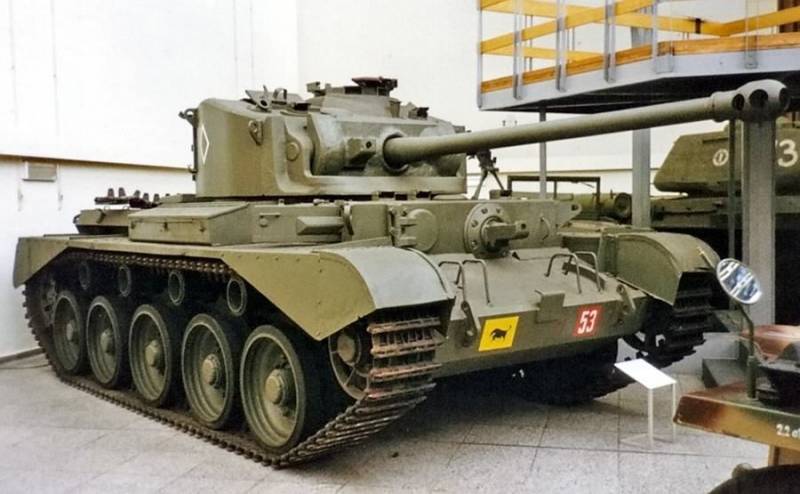
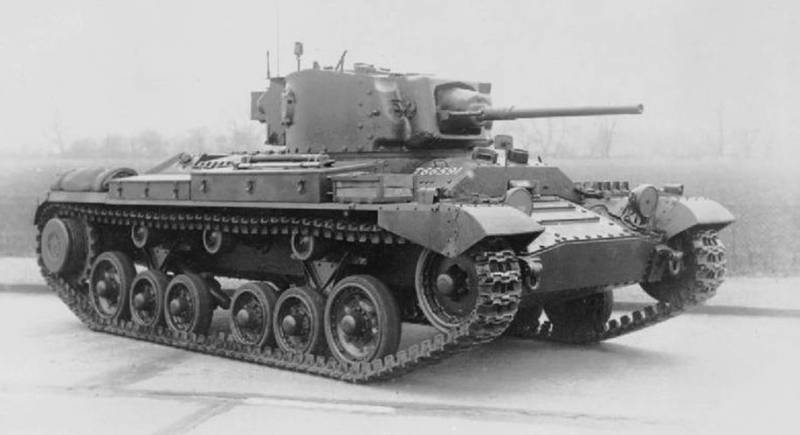
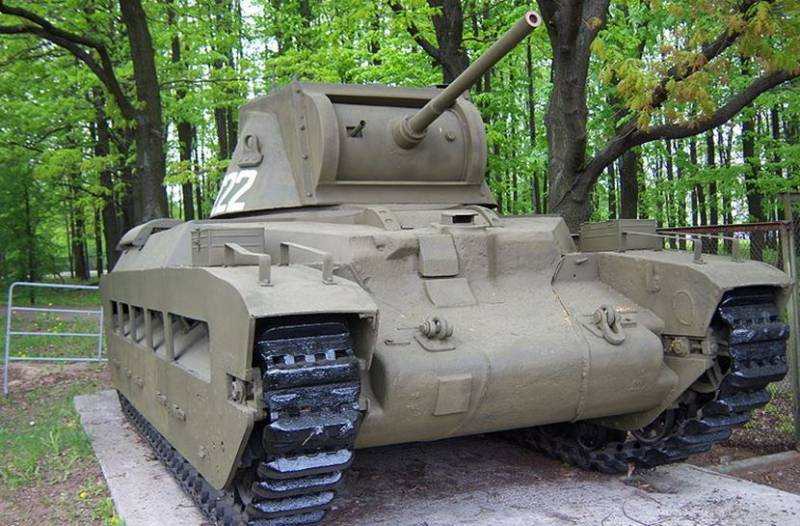
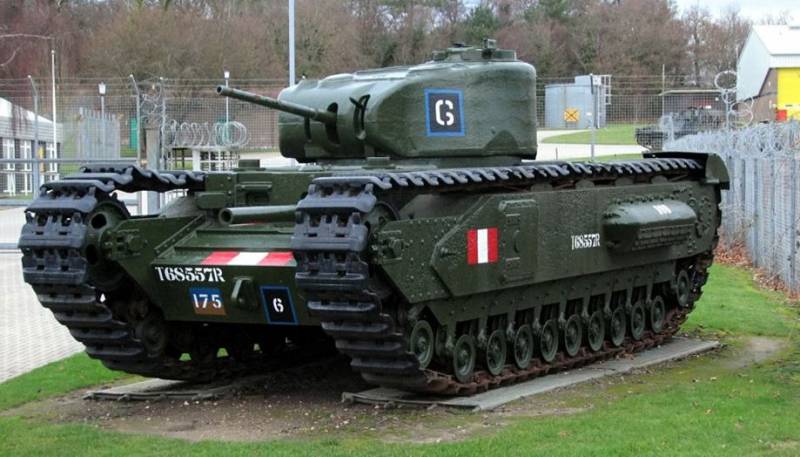
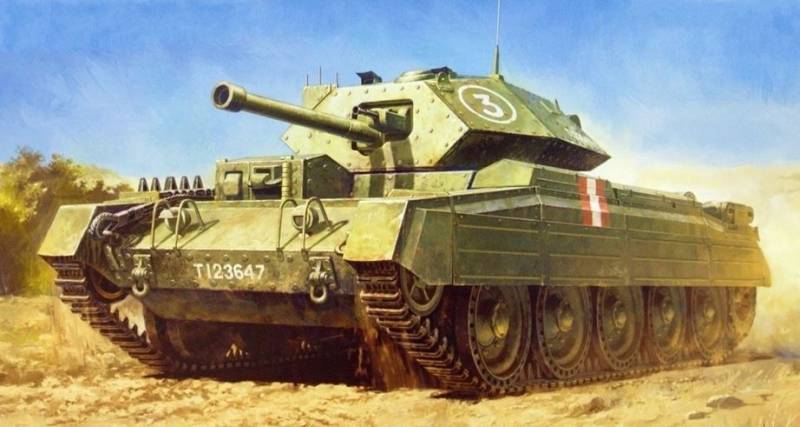
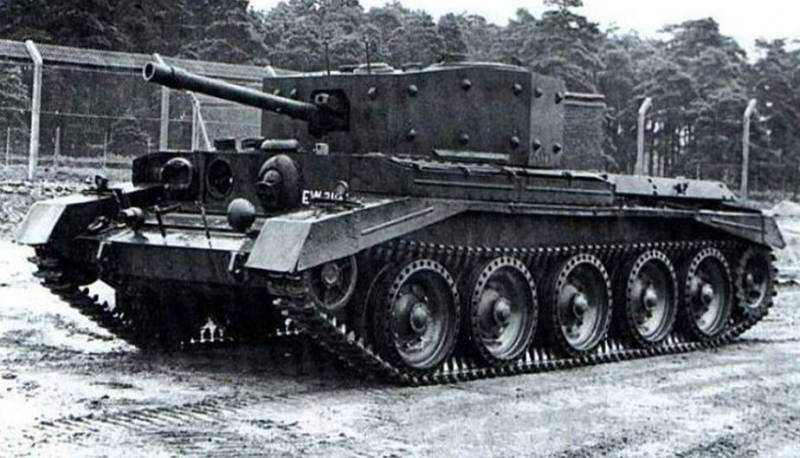
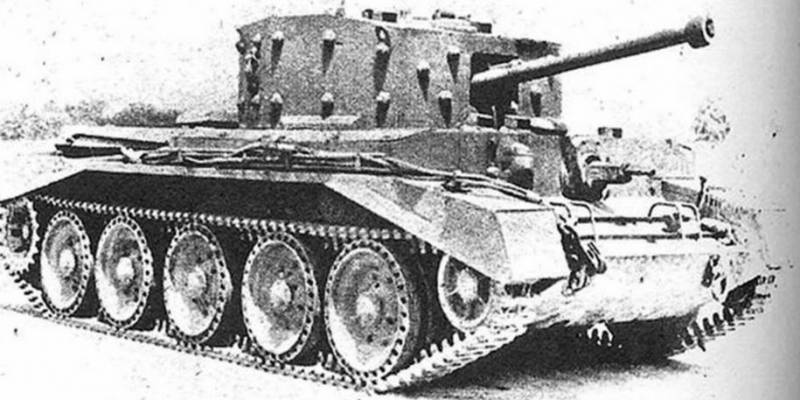
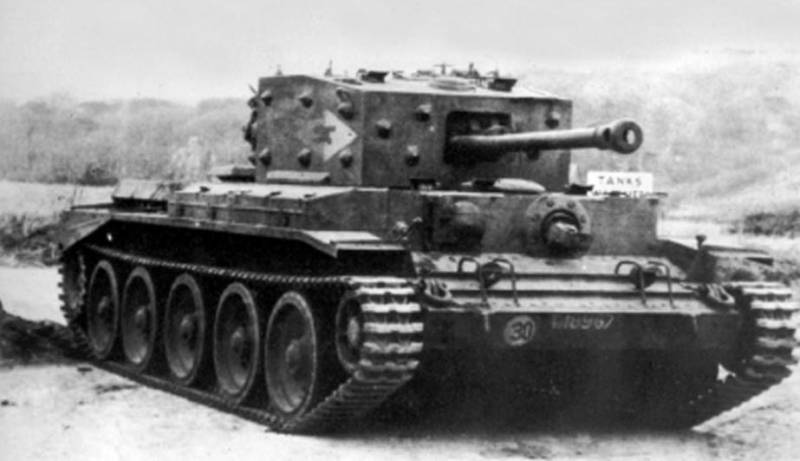
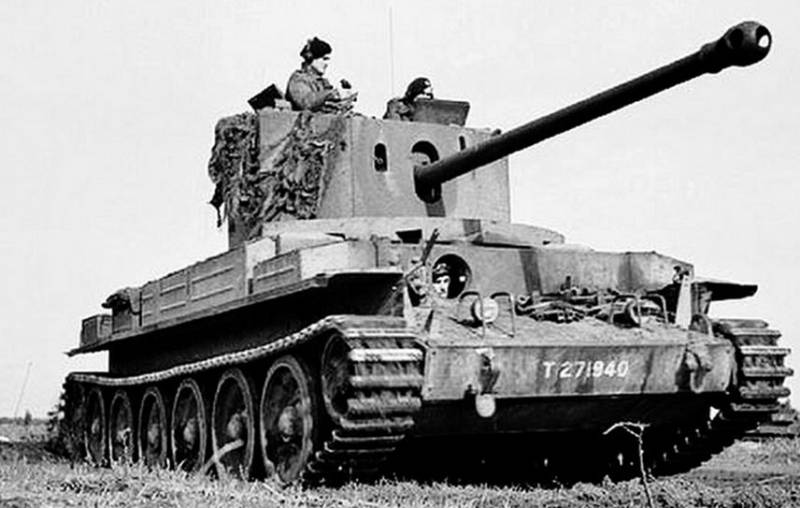
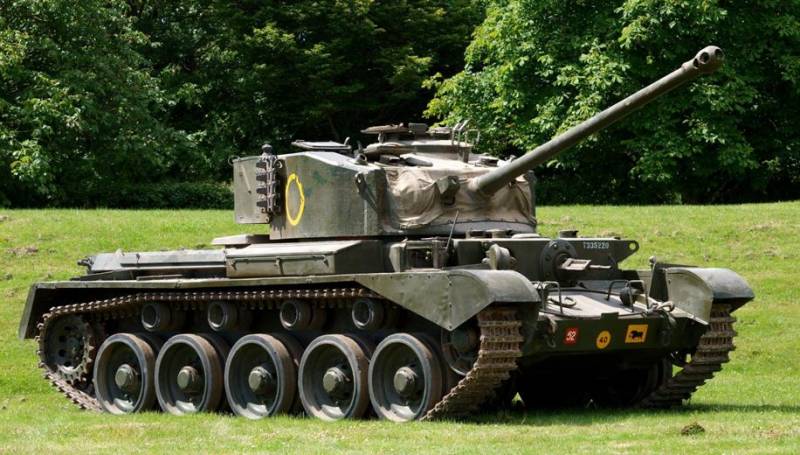
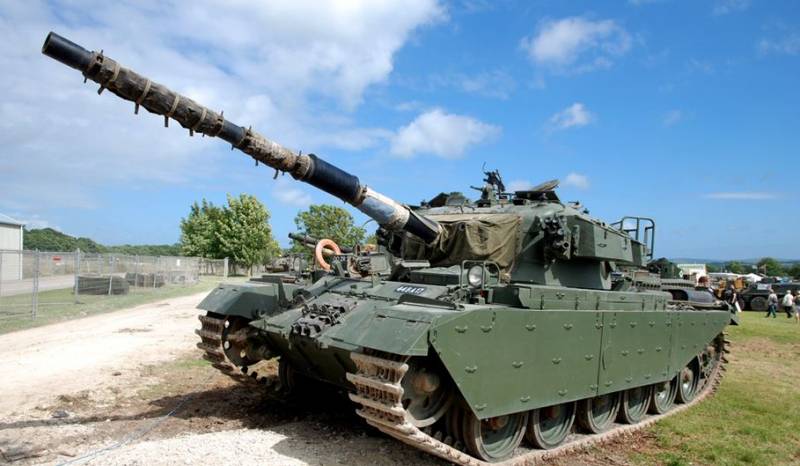
Information